Showing Spotlights 1297 - 1304 of 2779 in category All (newest first):
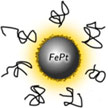 When nanoparticles enter the human body, for instance as part of a nanomedicine application, they come into immediate contact with a collection of biomolecules, such as proteins, that are characteristic of that environment, e.g. blood. A protein may become associated with the nanomaterial surface during a protein-nanomaterial interaction, in a process called adsorption. The layers of proteins adsorbed to the surface of a nanomaterial at any given time is known as the protein corona. The type and amount of proteins in the corona composition is strongly dependent on several factors, including physicochemical properties of nanoparticles; protein source; and protein concentration - and temperature.
When nanoparticles enter the human body, for instance as part of a nanomedicine application, they come into immediate contact with a collection of biomolecules, such as proteins, that are characteristic of that environment, e.g. blood. A protein may become associated with the nanomaterial surface during a protein-nanomaterial interaction, in a process called adsorption. The layers of proteins adsorbed to the surface of a nanomaterial at any given time is known as the protein corona. The type and amount of proteins in the corona composition is strongly dependent on several factors, including physicochemical properties of nanoparticles; protein source; and protein concentration - and temperature.
Jul 23rd, 2013
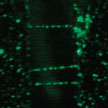 Direct visualization and manipulation of individual carbon nanotubes (CNTs) in ambient conditions is of great significance for their characterizations and applications. However, the direct visualization, location, and manipulation of individual CNTs is extremely difficult due to their nanoscale diameters. The observation of individual CNTs usually requires electron microscopes under high vacuum. Researchers now have proposed a facile way to realize optical visualization of individual carbon nanotubes and, based on that, macroscale manipulation of individual carbon nanotubes that could be carried out under an optical microscope.
Direct visualization and manipulation of individual carbon nanotubes (CNTs) in ambient conditions is of great significance for their characterizations and applications. However, the direct visualization, location, and manipulation of individual CNTs is extremely difficult due to their nanoscale diameters. The observation of individual CNTs usually requires electron microscopes under high vacuum. Researchers now have proposed a facile way to realize optical visualization of individual carbon nanotubes and, based on that, macroscale manipulation of individual carbon nanotubes that could be carried out under an optical microscope.
Jul 22nd, 2013
 Electronics will undergo revolutionary changes as the relatively novel disciplines of spintronics, nanoelectronics, and quantum computing come of age. A fundamental link between these fields can be established using molecular magnetic materials and, in particular, single-molecule magnets. Researchers have now demonstrated how to noninvasively graft a single-molecule magnet onto a carbon nanotube nanoelectromechanical system and probe the molecular nanomagnet with the carbon nanotube's mechanical motion.
Electronics will undergo revolutionary changes as the relatively novel disciplines of spintronics, nanoelectronics, and quantum computing come of age. A fundamental link between these fields can be established using molecular magnetic materials and, in particular, single-molecule magnets. Researchers have now demonstrated how to noninvasively graft a single-molecule magnet onto a carbon nanotube nanoelectromechanical system and probe the molecular nanomagnet with the carbon nanotube's mechanical motion.
Jul 19th, 2013
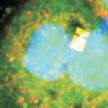 The study of individual cells is of great importance in biomedicine. Many biological processes incur inside cells and these processes can differ from cell to cell. The development of micro- and nanoscale tools smaller than cells will help in understanding the cellular machinery at the single cell level. All kinds of mechanical, biochemical, electrochemical and thermal processes could be studied using these devices. Researchers have now demonstrated a nanomechanical chip that can be internalized to detect intracellular pressure changes within living cells, enabling an interrogation method based on confocal laser scanning microscopy.
The study of individual cells is of great importance in biomedicine. Many biological processes incur inside cells and these processes can differ from cell to cell. The development of micro- and nanoscale tools smaller than cells will help in understanding the cellular machinery at the single cell level. All kinds of mechanical, biochemical, electrochemical and thermal processes could be studied using these devices. Researchers have now demonstrated a nanomechanical chip that can be internalized to detect intracellular pressure changes within living cells, enabling an interrogation method based on confocal laser scanning microscopy.
Jul 18th, 2013
 Liquid-solid phase transitions can be an attractive route for the temperature regulation of electrical and/or thermal properties because of the availability of materials with a wide range of phase transition temperatures. Achieving different magnitudes of enhancement in solid and liquid state is difficult to explain from a theoretical point of view. When researchers made similar experiments using single-walled carbon nanotubes as the additives, they noticed much higher thermal conductivity improvement than the evidence available in existing literature. This is something they never anticipated to happen and they were quite surprised with the enhancement seen.
Liquid-solid phase transitions can be an attractive route for the temperature regulation of electrical and/or thermal properties because of the availability of materials with a wide range of phase transition temperatures. Achieving different magnitudes of enhancement in solid and liquid state is difficult to explain from a theoretical point of view. When researchers made similar experiments using single-walled carbon nanotubes as the additives, they noticed much higher thermal conductivity improvement than the evidence available in existing literature. This is something they never anticipated to happen and they were quite surprised with the enhancement seen.
Jul 17th, 2013
 Researchers in Korea have found that rice husks - the outer, protective covering of a rice kernel - can be a source of silicon that can be used for high-capacity lithium battery anodes. Most of today's lithium-ion batteries rely on anodes made from graphite, a form of carbon. There are several candidate electrodes to replace graphite as the anode for lithium-ion batteries and silicon has been recognized as a favorable anode material because its capacity is 3-5 times larger than those of existing graphite anodes. The new work demonstrates that rice husks can be used to produce silicon with an ideal porous nanostructure for use in high-capacity lithium-ion battery anodes.
Researchers in Korea have found that rice husks - the outer, protective covering of a rice kernel - can be a source of silicon that can be used for high-capacity lithium battery anodes. Most of today's lithium-ion batteries rely on anodes made from graphite, a form of carbon. There are several candidate electrodes to replace graphite as the anode for lithium-ion batteries and silicon has been recognized as a favorable anode material because its capacity is 3-5 times larger than those of existing graphite anodes. The new work demonstrates that rice husks can be used to produce silicon with an ideal porous nanostructure for use in high-capacity lithium-ion battery anodes.
Jul 16th, 2013
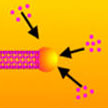 One of the problems researchers have to struggle with in exploiting the extraordinary mechanical properties of carbon nanotubes (CNTs), for instance for building superstrong fibers or T-shirt-thin ballistic armors, has been the question of how to synthesis CNTs with macroscale lengths and without decreasing areal density. A crucial step for realizing such applications will be the ability to mass-produce carbon nanotubes with meter-scale or even kilometer-scale length and excellent mechanical properties. In new work, a team of researchers from Tsinghua University in Beijing have found that the growth of ultralong carbon nanotubes could be described using Schulz-Flory distribution, which is very common in polymer science.
One of the problems researchers have to struggle with in exploiting the extraordinary mechanical properties of carbon nanotubes (CNTs), for instance for building superstrong fibers or T-shirt-thin ballistic armors, has been the question of how to synthesis CNTs with macroscale lengths and without decreasing areal density. A crucial step for realizing such applications will be the ability to mass-produce carbon nanotubes with meter-scale or even kilometer-scale length and excellent mechanical properties. In new work, a team of researchers from Tsinghua University in Beijing have found that the growth of ultralong carbon nanotubes could be described using Schulz-Flory distribution, which is very common in polymer science.
Jul 15th, 2013
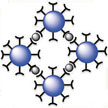 Colorimetric sensing techniques require only the naked eye or ordinary visible color photography and are attractive because of their low cost, use of inexpensive equipment, and above all, their simple-to-understand results. Researchers have now developed a plasmonic colorimetric assay to detect mercuric ion based on urine. Compared to other gold-nanoparticle-based colorimetric systems, it showed excellent selectivity to mercury ions and good sensitivity as high as can be used for mercury ion detection in industrial wastewater.
Colorimetric sensing techniques require only the naked eye or ordinary visible color photography and are attractive because of their low cost, use of inexpensive equipment, and above all, their simple-to-understand results. Researchers have now developed a plasmonic colorimetric assay to detect mercuric ion based on urine. Compared to other gold-nanoparticle-based colorimetric systems, it showed excellent selectivity to mercury ions and good sensitivity as high as can be used for mercury ion detection in industrial wastewater.
Jul 12th, 2013
 When nanoparticles enter the human body, for instance as part of a nanomedicine application, they come into immediate contact with a collection of biomolecules, such as proteins, that are characteristic of that environment, e.g. blood. A protein may become associated with the nanomaterial surface during a protein-nanomaterial interaction, in a process called adsorption. The layers of proteins adsorbed to the surface of a nanomaterial at any given time is known as the protein corona. The type and amount of proteins in the corona composition is strongly dependent on several factors, including physicochemical properties of nanoparticles; protein source; and protein concentration - and temperature.
When nanoparticles enter the human body, for instance as part of a nanomedicine application, they come into immediate contact with a collection of biomolecules, such as proteins, that are characteristic of that environment, e.g. blood. A protein may become associated with the nanomaterial surface during a protein-nanomaterial interaction, in a process called adsorption. The layers of proteins adsorbed to the surface of a nanomaterial at any given time is known as the protein corona. The type and amount of proteins in the corona composition is strongly dependent on several factors, including physicochemical properties of nanoparticles; protein source; and protein concentration - and temperature.
 Subscribe to our Nanotechnology Spotlight feed
Subscribe to our Nanotechnology Spotlight feed





